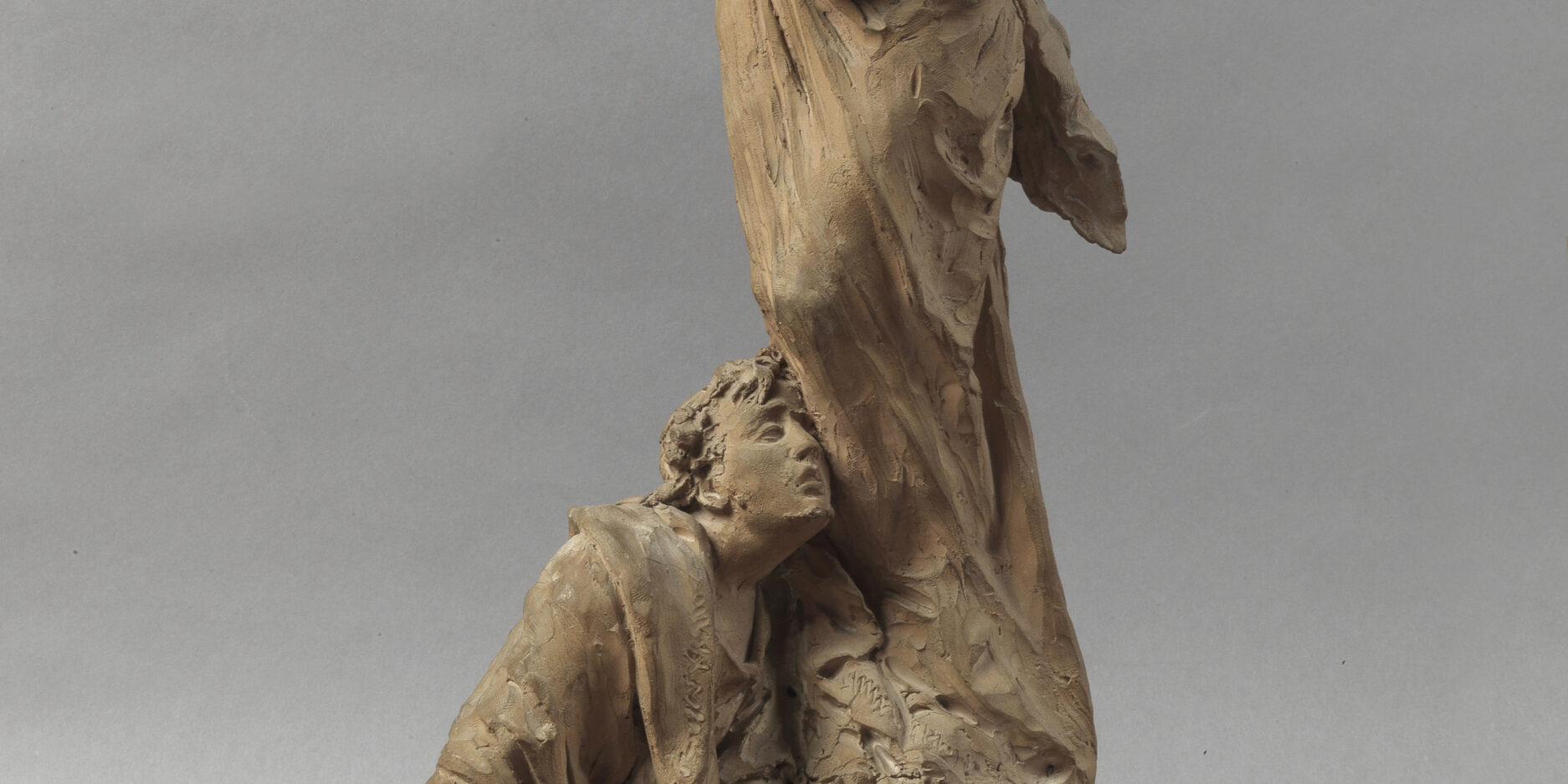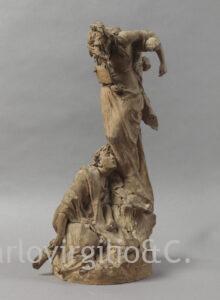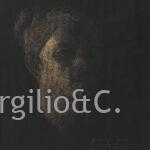| NOT AVAILABLE

Ettore Ferrari
Rome, 1845-1929
Cum Spartaco Pugnavit
1877
Terracotta, height 36 cm
Initialled and dated: “EF 1877”
Provenance: Rome, Bruno Mantura collection
Bibliography: Bruno Mantura, Ettore Ferrari. Sculture tra il 1867 e il 1880, in Capitolium, XLIX (1974), 7-8, pp. 41-50;
Enrico Guidoni, Il gesto della Rivoluzione. Il Bruto di Ettore Ferrari e la linea “mazziniana della scultura italiana (1846-1872), in Ettore Ferrari 1845-1929, exhibition catalogue from Latina edited by Bruno Mantura and Patrizia Rosazza Ferraris, Milan, Rome 1988, pp. 19-109; Ettore Passalapi Ferrari, Ettore Ferrari tra le Muse e la politica, Città di Castello 2005, 46-47, 58, 67-70.
.
Ferrari was soon to debut in large public sculpture: initially with the monuments for Romania of the poet Heliade Radulescu (1877) and Ovid (1879), then for Venice, from 1880, with the Equestrian Monument to Victor Emanuel II. There subsequently followed numerous works dedicated to Garibaldi and the figures of the Risorgimento. While two masterpieces, Giordano Bruno in Campo dei Fiori (1887) and the Monument to Giuseppe Mazzini located on the Aventine (1902-1911), which would emblematically clarify his vocation for monumental sculpture in its formal meanings, as articulated plastic synthesis of volumes and chromatic contrasts, and in the political monuments, able to trigger strong ideological reactions from the public of the time.
Meanwhile, over the course of the 1870s, Ferrari also tried to transfer onto the figurative level Mazzinian and Republican militancy, which, after adhering to the failed insurrectional attempt of 1867 against the papal regime, would see him involved in dual public collaboration, as city councillor and deputy, as well as masonic, in the quality of Grand Master of the Grand Orient of Italy. Thus revision of the Mazzinian artistic theories suggested, besides enthusiastic romantic literary themes, the restoration of historical subjects with a view to civil sculpture, forming a new revolutionary iconography to put in place new formulas that could combine modern realism with the baroque tradition of Bernini. The results are the series of terracotta studies and large scale figures including the figures of Brutus, founder of the Roman Republic, Stefano Porcari, the humanist who tried to stir up the Roman people against the Church to re-establish the ancient republic, of The Suicide of Jacopo Ortis, dedicated to the sacrifice of the self to escape tyranny, as well as the figure of Mazzini himself, which was exhibited in Naples in 1877 and in Paris the following year.
In 1877 the series also included the subject of Spartacus, architect of history’s first social revolution and previously protagonist of Denis Foyatier’s heroic statue, carried out in Rome in 1830 and in turn giving a nod to Canova’s Creugas and Demoxenos (Rome, Vatican), and the work of Vincenzo Vela, immediately recognised as a call to anti-Austrian arms on the eve of the fateful ’48 (Ligornetto, Museo Vela). In reference to some pencil studies probably dating back to 1867-68 and mentioned by Bruno Mantura, Ferrari again investigated the theme of the vanquished, portraying the ferocious Roman repression in the two sketches Cum Spartaco Pugnavit. The study presented here, with the crucified slave, and another from a private collection with the figure tied to the cross, thus constitute a sort of lay Via Crucis, as Mantura suggests.
In the sketch put forward here, the pale, defenceless beauty of the female figure is moving, lamented by her friend, like a mourner at the foot of the cross. The emphasis of pathos of this expressive figure, alongside the crude realism dictated by the inert weight of the composition, defined a strong political and social manifesto against exploitation, servitude and despotism. A manifesto that was at the same time also artistic, neo-baroque in virtuosity of execution, in the potent contrast of full and empty and in its three-dimensional composition, providing multiple points of view.
Three years later, presenting the large scale model of the group at the Esposizione Nazionale di Torino (Rome, Galleria Nazionale d’Arte Moderna), the artist may have softened the subversive effect entrusted to pathos, relying on the strong realism of the magnificent male nude of the gladiator to put across the invitation to political action. His character was well understood by the press of the time: “Ferrari has remained faithful to the belief, recently tackled by Bonghi, according to which the revolt led by Spartacus, rather than a political fact, was considered a question of a humanitarian nature, like the revolt against the principle of slavery and against the use of gladiatorial combat. According to this belief, Spartacus and his followers assume a sacred character, becoming so many martyrs of the feeling for human dignity that rebels against the horrors and degradation of slavery” (Anonimo, Esposizione di Torino – La sala della scultura e il gruppo di Ettore Ferrari di Roma, in “L’illustrazione Italiana,” no. 21, 23 May 1880, p. 321). And despite the accusations of plagiarism of the group by Louis-Ernest Barrias, Le Serment de Spartacus, made in Rome in 1871 (Paris, Tuileries), provoking a vast polemic taken up by the press of the period, the group won the award for first prize for sculpture and also saw its success confirmed at the London exhibition of 1888.
Stefano Grandesso
The Carlo Virgilio & C. Gallery searches for works by Ferrari Ettore (1845-1929)
To buy or sell works by Ferrari Ettore (1845-1929) or to request free estimates and evaluations
mail info@carlovirgilio.co.uk
whatsapp +39 3382427650

